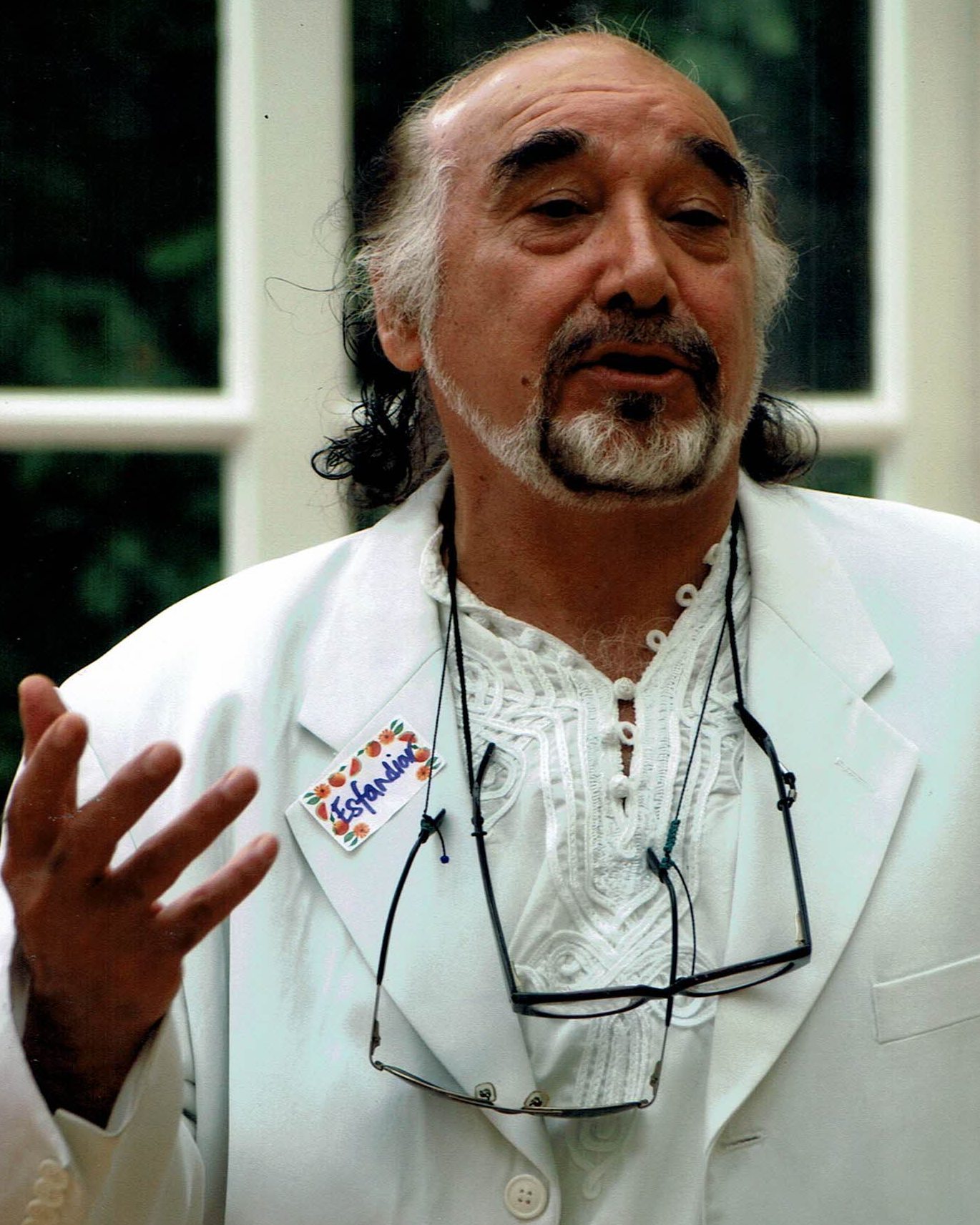
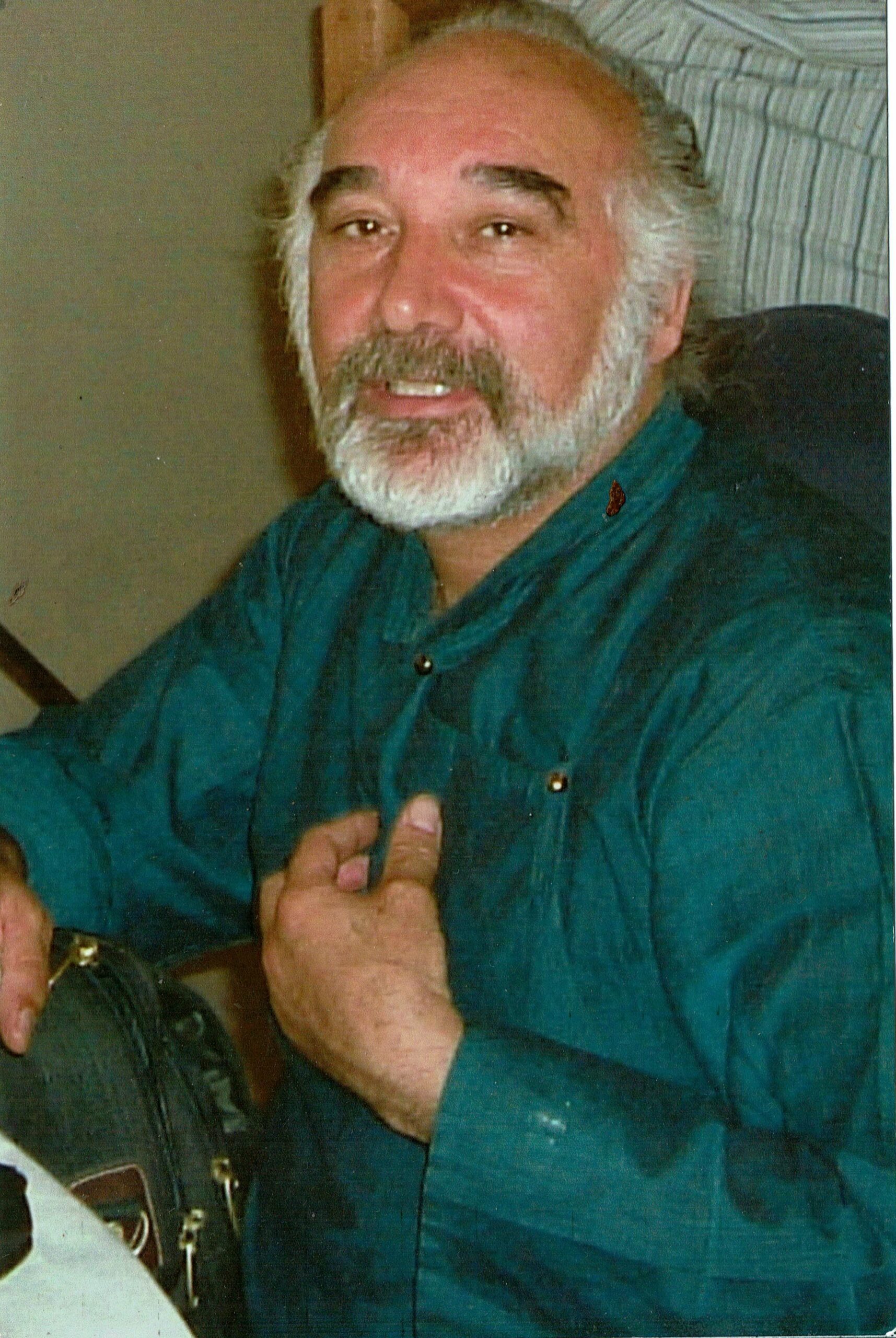



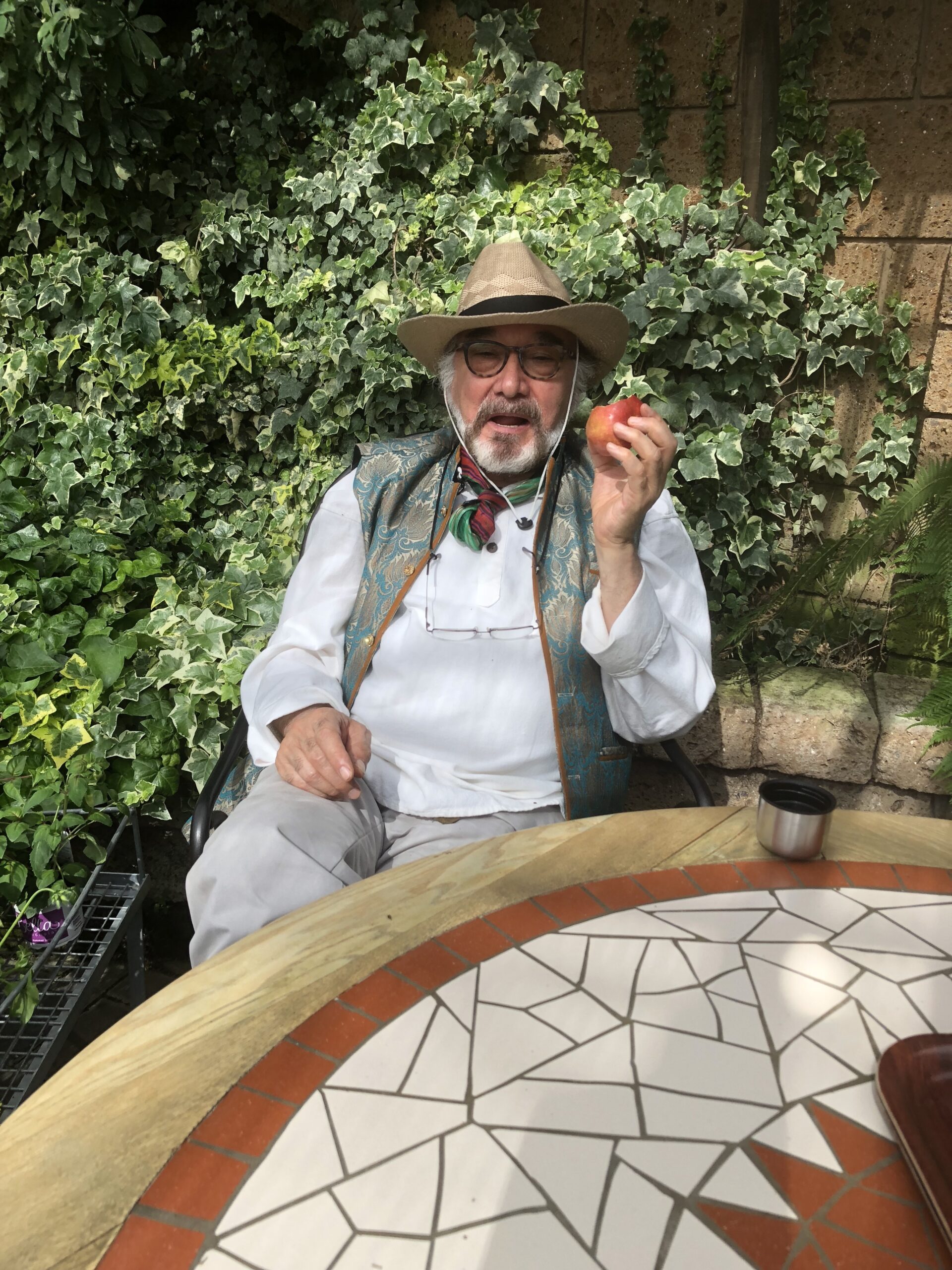
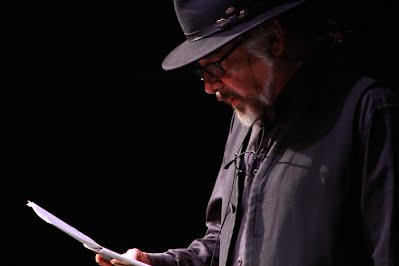
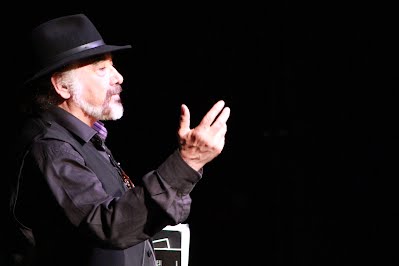
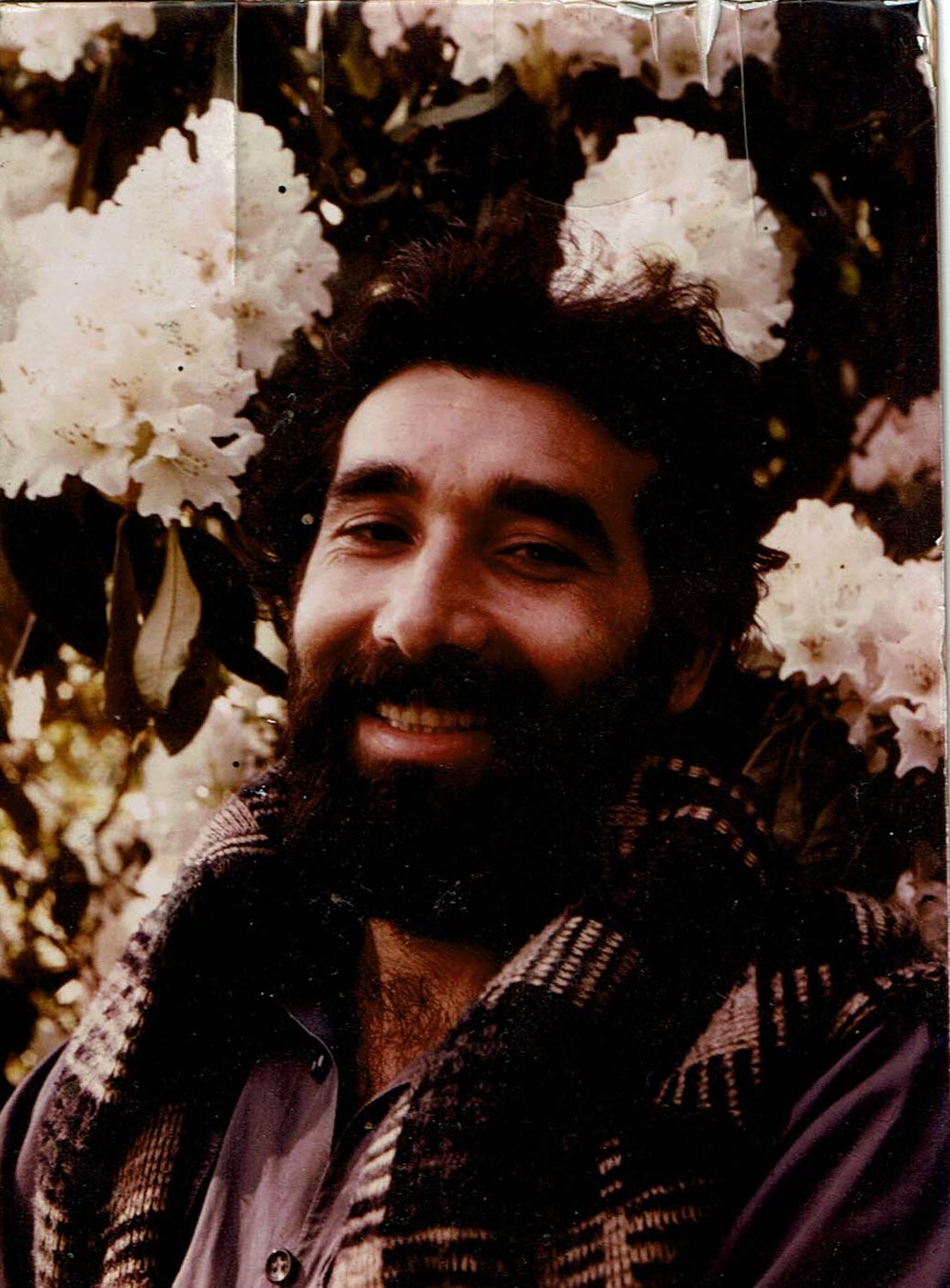
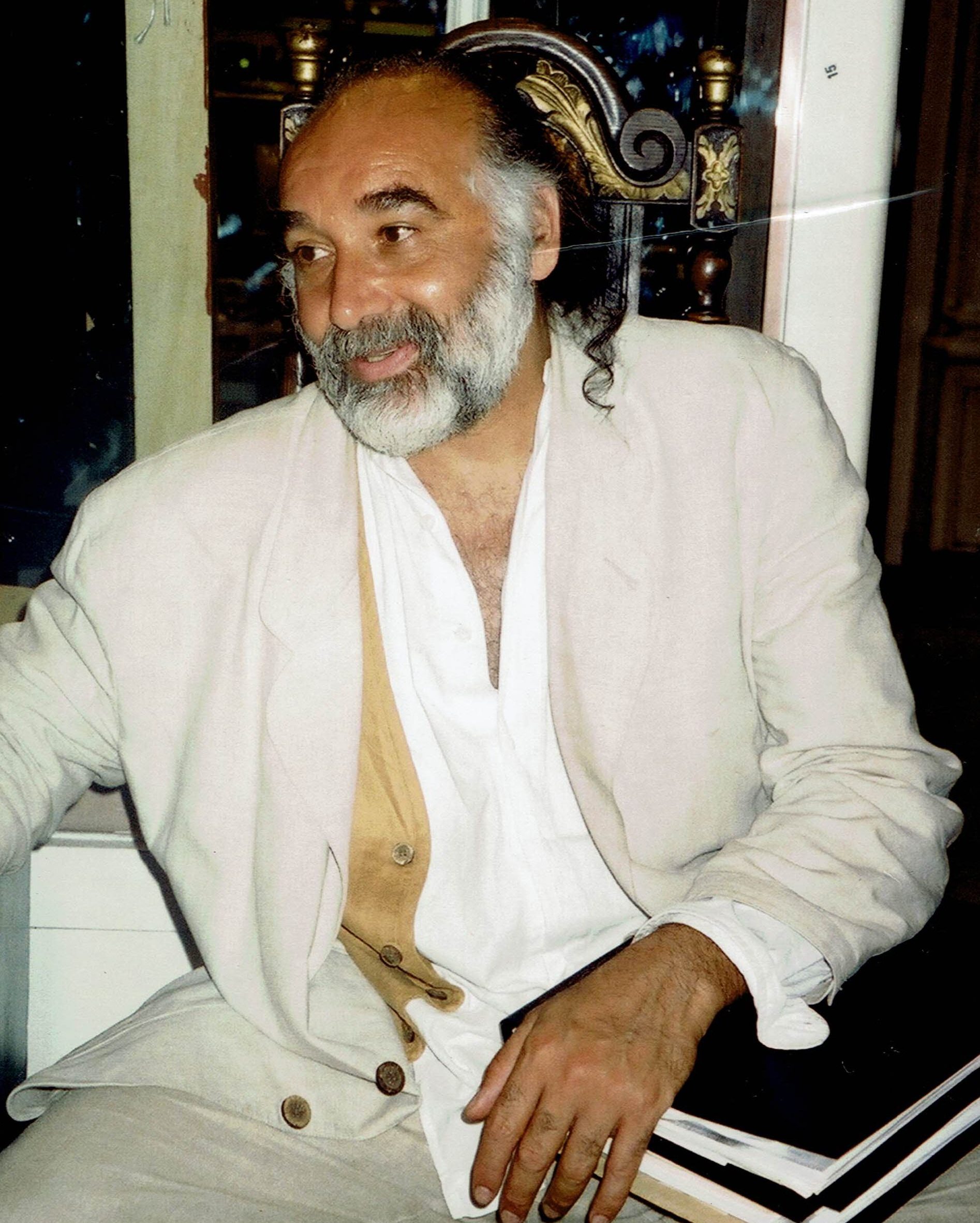
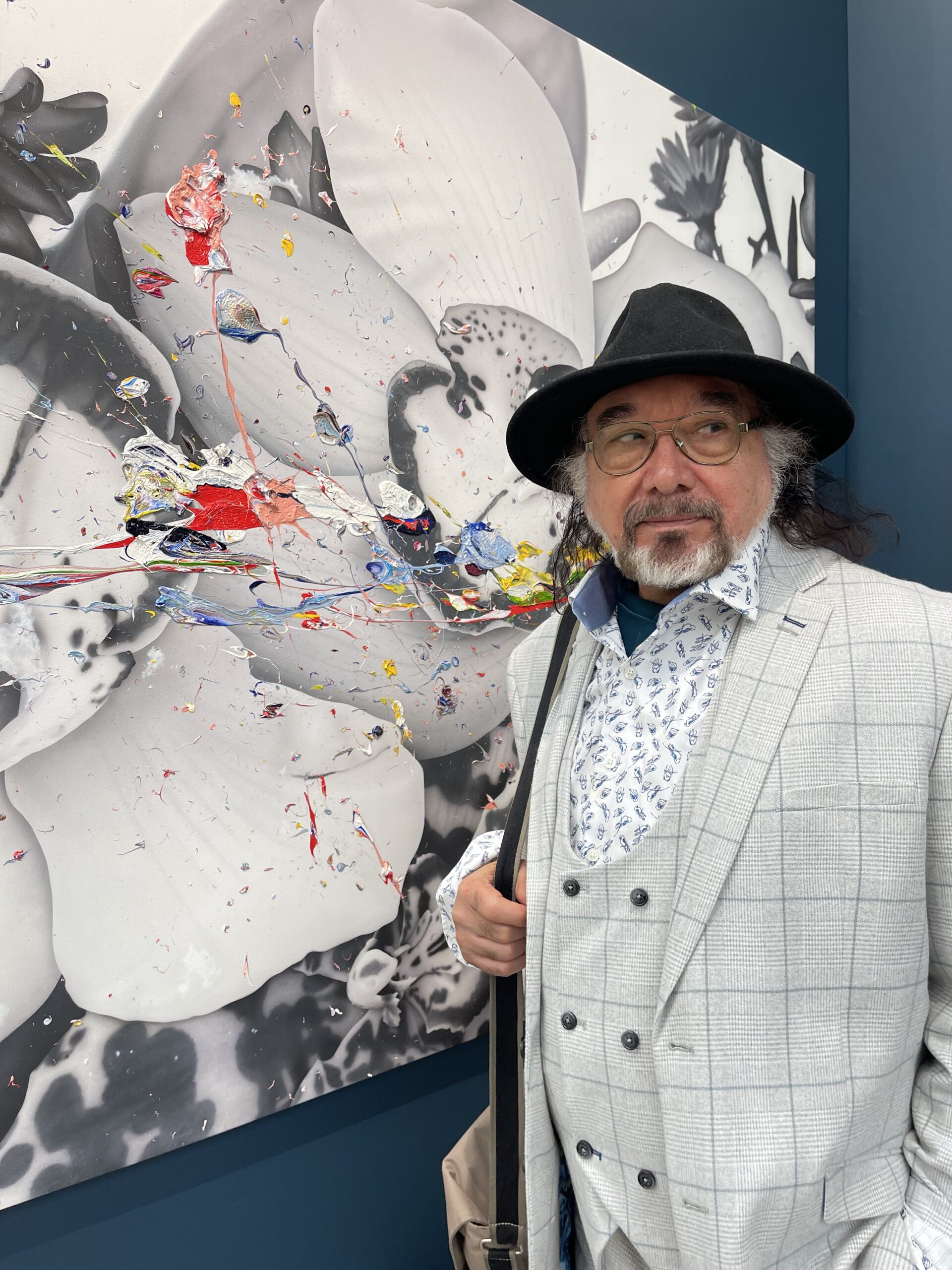

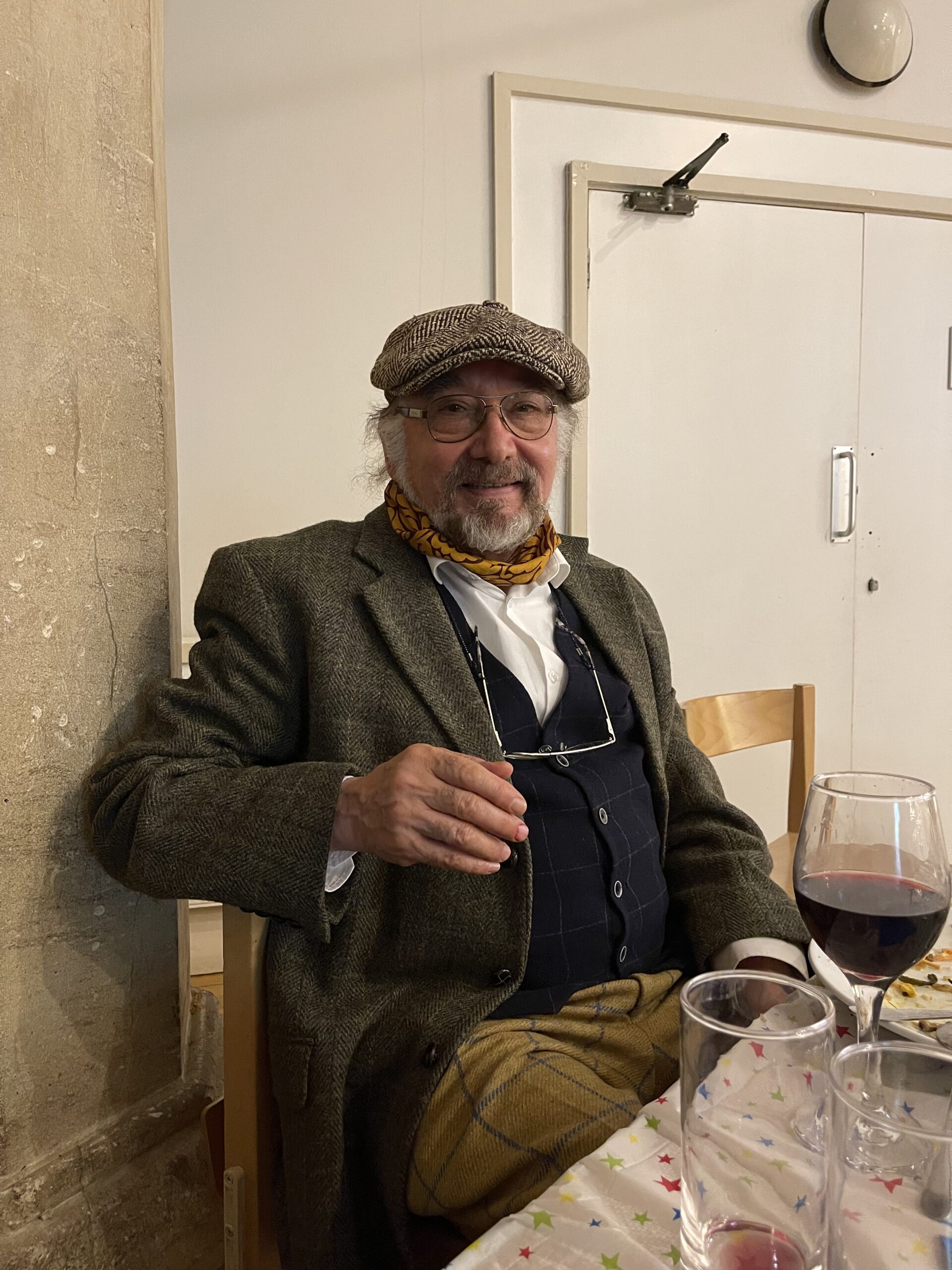

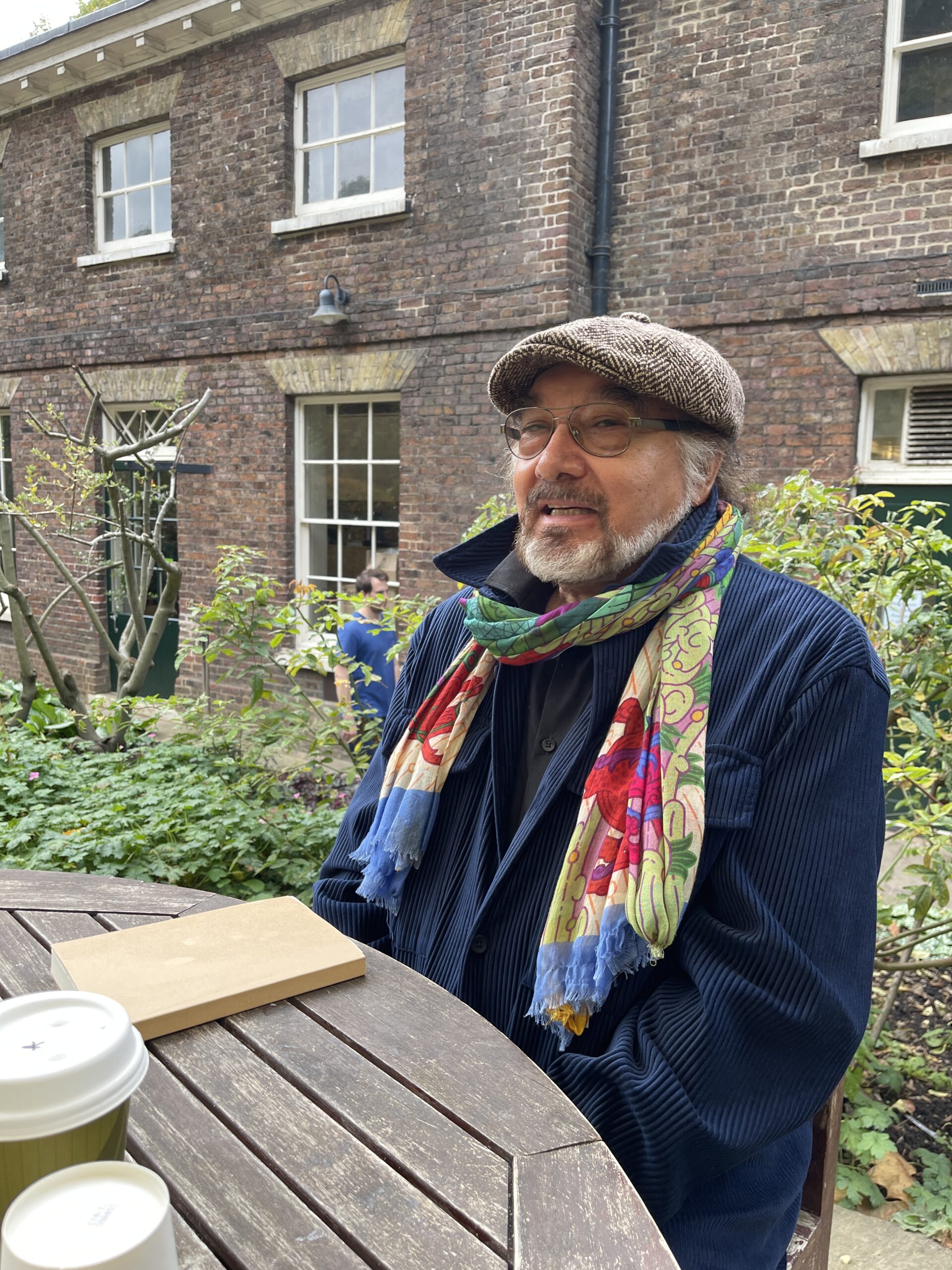
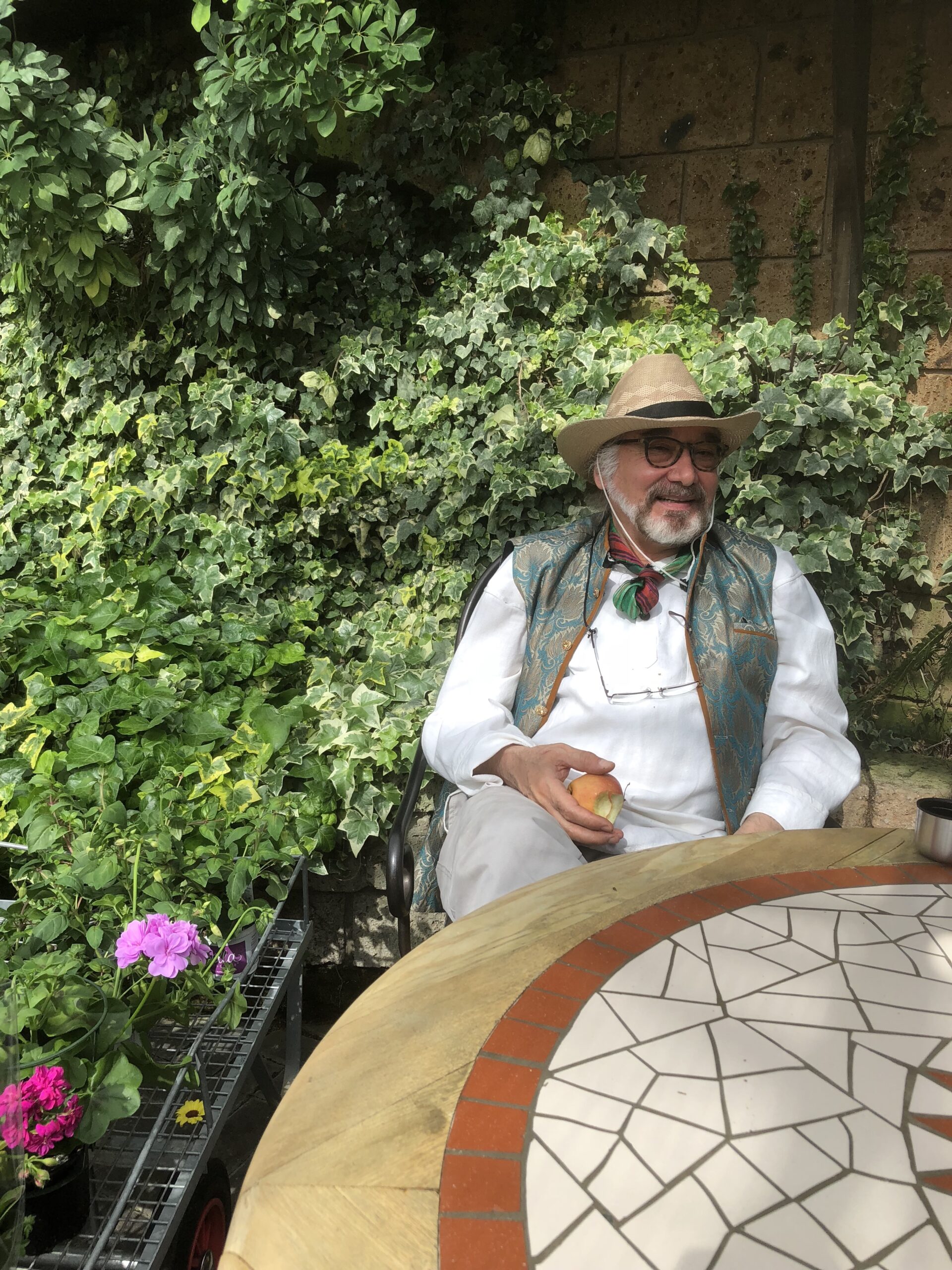
Esfandiar Esfandarmaz (Ahmadi):
Esfandiar Esfandarmaz (Ahmadi)
Esfandiar Esfandarmaz is a pioneering poetical painter in modern art. Some critics have hailed him as a pioneer of the art form, predating filmmakers such as Kiarostami and Makhmalbaf, who also experimented with blending poetry and visual storytelling. Born in 1954, Esfandarmaz grew up during a turbulent period in Iranian history, marked by significant political upheaval and repression. Despite this, he continued to develop his artistic skills, eventually earning the recognition of writers such as Mino Ritz, who named a character in her story after him Kaveh the son of Dictatorship. During the reign of the Shah, Esfandarmaz witnessed the establishment of SAVAK, the secret police, which led to widespread political repression and the stifling of dissent. Despite these challenges, Esfandarmaz remained steadfast in his commitment to his art, and his work continues to inspire and influence artists.
Esfandiar is a self-taught artist who brings unique perspectives and techniques to the field. His success, along with other self-taught artists like Jean-Michel Basquiat, demonstrates that artistic talent can flourish outside traditional educational pathways, leading to innovation and originality in the art world.
. At the age of twelve, Mr Saber the director of the Art Institution in Shiraz- recognized Esfandiar’s talent and awarded him a scholarship to study at Khaneh Honar Shiraz, where Saber was the Director and teacher and considered the most innovative artist in Iran.Shiraz. However, Esfandiar’s parents did not believe in an artistic education. (interview with Esfandiar 1999 ) https://vimeo.com/286991621 ACC Art and Communication Nentre 1999.
He studied mathematics and finished Electrical and Control Engineering and continued his research and studying in the United Kingdom,
Esfandarmaz’s artistic development During ten years of the Shiraz Festival
of Arts (1967-1977)
Esfandiar artistic development formed during the Shiraz Art Festival was a festival of performing arts music and films that was held at the end of summer every year from 1346 to 1356. The Shiraz Art Festival, held in Iran from (1967 to 1977), was significant for promoting innovation, integrating traditional and modern styles, and providing a platform for young emerging artists to international recognition. It encouraged new talents, offered social and political commentary, influenced Iranian poetry, cinema and music, and played a crucial role in preserving Persian art forms. Esfandiar believed although the festival despite facing criticism and ended in 1977, it remains a symbol of the larger cultural movement in Iran that blended tradition with modernity and shaped the contemporary art scene. Esfandiar regularly attended most of the performances during the ten years 1967-77 of the festival.
3- Summer’s Embrace: Ripened passions
The Decade of Turmoil “The Era of Strife” (1980-1990) & Harmony “The Age of Tranquility “(2008- 2019) period
over the years, the Shiraz Art Festival has been a magnet for internationally acclaimed artists, writers, and performers. Among the notable attendees were Arthur Miller, a celebrated American playwright whose works were showcased at the festival, and Ted Hughes, an English poet laureate who had ties to Sylvia Plath. Harold Pinter, a British playwright who received the Nobel Prize in literature in 2008, was also involved in the festival. Peter Brook, a renowned English theatre director, and Tadeusz Kantor, a distinguished Polish theatre director, artist, and writer, whose avant-garde works were also featured at the festival. Esfandiar also took part as an actor in the play when Kantor was looking for na theatrical face among the audience.
Through his artistic pursuits, he successfully bridged Western influences with Eastern culture. He showcased his abstract paintings in yearly solo exhibitions from 1984 to 2006 at prestigious venues such as the London St Raphael Gallery and Sackwel Gallery in Mayfair London. Additionally, he received sponsorship from the Leighton House Museum for a major solo exhibition of his poetical paintings.
Esfandarmaz carried on painting and producing a collection of abstract calligraphy on paper during his free time for his solo exhibitions in London. He was among the first artists to use abstract calligraphy alongside symbolic art after the Saghakhaneh group and Zendehrodi emerged in Paris.
Conflict
From 1980 to 1990, Esfandarmaz resided in the UK and experienced several significant wars, including the Iran-Iraq War (1980-1988), the Falklands War (1982), and the British participation in Balkan peacekeeping and conflict missions mandated by the United Nations (UN) and the North Atlantic Treaty Alliance (NATO). Additionally, he witnessed two Gulf Wars during 1990-1991. In 2003, a smaller yet advanced force engaged in high-intensity conflict against largely unconventional forces during the invasion of Iraq. Esfandarmaz collaborated with other English poets to publish an anti-war poetry book when he joined the Huma Bird poets (voices from the Middle East). He also performed at poetry festivals in and outside of London.
4-The Era of Reconciliation:
It is challenging to identify a time when the entire world was free from conflict and at peace. Even during periods without major disputes, smaller tensions, civil unrest, and conflicts would often occur somewhere in the world. However, the end of the Cold War in the early 1990s brought about a significant reduction in tensions between major global powers, resulting in a relative improvement in international relations. Although regional conflicts in the Middle East, such as the Iran-Iraq and Gulf wars, have ended, tensions still exist, and global peace remains a dream yet to be achieved. From 2008 to 2019, Esfandiar prepared eight poetry collections for publication, including Huikues and short poems which were published in the UK in the Second Anthology. Esfandiar also adopted a style influenced by Persian short poetry forms, such as (Robyat)ربایی and (Quadrant)دوبیتی.
5- Autumn’s Grace:
He joined the Pegasus Poets, which led to the publication of The First and Second Anthologies, consisting of three books in total.
Poems by Esfandiar Ahmadi – Esfandarmaz Presented to the festival of poetry (Words 2013) & The Fifth Independent English-Persian Theatre Festival-London, https://vimeo.com/user14122670 Please visit his page on https://vimeo.com/user14122670
Esfandiar created the Literary Circle Thursday group in St John’s Wood, London. The group gathered every two weeks for poetry sessions, where he shared his work with a community
of artists.
In addition to this, he travelled to Spain every Wednesday to Sunday to paint in his studio located in Casa Niveran in Guadimina-Marbella. Esfandiar also organized an annual fringe exhibition in the villa, which drew in many art enthusiasts and collectors.
From 1984 to 1997, Esfandiar was granted an exhibition of his abstract and figurative art at Leighton House Museum. His works included poetical paintings and modern abstract paintings that incorporated calligraphies for meditation and layers of texture.
6- The Winter Period: Reflection and Legacy
As we approach the winter phase of Esfandiar Esfandarmaz’s artistic journey, a time often symbolizing reflection, maturity, and sometimes the end of an era, it is fitting to contemplate his profound influence and the resonance of his work.
Decade of Turmoil and Harmony:
Esfandiar Esfandarmaz’s career has spanned decades of turmoil, peace, creativity, and innovation. His life’s work presents an intricate tapestry, where threads of Iranian tradition meet the warp of Western influences, producing an artistic weave that is as complex as it is captivating.
His pioneering blend of poetical paintings has placed him in a league with artistic giants and celebrated filmmakers. Yet, his journey was not without challenges. Born into an Iran marked by political unrest, facing the scepticism of his own family towards his artistic pursuits, and being a witness to numerous conflicts, Esfandarmaz’s resilience is a testament to his passion and dedication.
Formation of His Artistic Period — Shiraz Festival:
His creativity flourished during the Shiraz Festival of Arts, a defining period that honed his skills and shaped his artistic identity. The Summer’s Embrace, The Decade of Turmoil, and The Era of Reconciliation all encapsulate not only periods in his life but also universal themes of growth, struggle, and unity that resonate with a broader audience.
Poetical Abstract Paintings and Abstract Calligraphy:
Esfandarmaz’s work in abstract calligraphy and his collaborative efforts to give voice to anti-war sentiments have contributed to his unique place in the art world. His influence is not confined to the canvas; it reaches into the literary realm with his poetry collections and extends into the community through his Literary Circle Thursday group.
The “Farr” Period:
Winter, often seen as a period of rest and reflection, brings no slowdown for Esfandarmaz. His art continues to evolve, and his legacy seems only to grow, much like the lotus or Nilufar, a symbol he might resonate with. Just as the lotus rises above the muddy waters to bloom, Esfandarmaz’s art transcends the turmoil and conflicts of his time, offering a glimpse of beauty, enlightenment, and radiant splendour akin to the concept of Farr.
Personal Experience and Universal Truth:
His art, much like the traditional Shoji screens, serves as a conduit between different realms of existence, blending and allowing light to pass through various layers of culture, personal experiences, and universal truths.
In a time where global peace remains elusive, artists like Esfandarmaz remind us of the transcendental power of creativity, empathy, and understanding. His works stand as a beacon, inviting us to reflect, connect, and perhaps find in ourselves the ability to transcend our ordinary existence, just as the lotus ascends above the murky depths, or the light that filters through a Shoji, illuminating both sides of the divide.
The personal experience of Esfandarmaz and his career is not a dormant season but a period rich with the fruits of a lifetime’s labour time of continued growth and enduring influence. His story is not just an individual’s journey but a universal saga of art’s timeless power to elevate, inspire, and heal.
7- Here are the selected exhibitions featuring the works of Esfandiar Esfandarmaz (Ahmadi):
1993: Solo exhibition of Persian mysticism in art at Lauderdale House in London.
1994: Solo exhibition of poetical abstraction and symbolic calligraphy in London.
1995-2005: Fringe Exhibitions held at a house where Esfandiar was a co-founder of a literary group called the Thursday Group, which met every week for 10 years in St. John’s Wood, London.
1997: Solo exhibition titled “Seeing What the Eye Cannot See” at the Leighton House Museum.
2001: Paintings and sculptures were exhibited at the St. Raphael Gallery in London.
2002: Display of poetical paintings at the St. Raphael Gallery in London.
2003: Exhibition of abstract and poetical paintings on large canvases in Spain’s Casa Nivaran.
2004: Exhibition of sacred geometry and calligraphy abstracts at the Sackwell Gallery in London.
2006: Exhibition of abstract and poetical paintings on large canvases in Spain’s Casa Nivaran; Display of poetical paintings at the St. Raphael Gallery in London.
2007: Exhibition of abstract and poetical paintings on large canvases in Spain’s Casa Nivaran.
2008-2019: Esfandiar joined the Pagasuas poets and participated in weekly meetings, creating 11 volumes of poetry.
2012: Poetry performance celebrating unique voices, including Peggy Adams, Vera Kryshek, and Una Larter, at an event honouring passed-away poets; Poetry performance at the Islington Art Factory in London.
2016: Poetry performance at the 4th Independent London Persian-English Theatre Festival.
2017: Exhibition of figurative paintings at the SPACE Martelo Studios in London, UK.
2020: Exhibition and presentation of recent works- In Practice -at the Royal Academy London, UK.
Awards:
1997: Award and sponsorship from Leighton House Museum in London for an exhibition of paintings inspired by the mystic Persian Poet Rumi.
2019: Top shortlisted and awarded the Honorable Member of the Royal Society of Photography.
2020: Top shortlisted prize winner and awarded sponsorship from Hampstead School of Art in London.
8- Here are some of the publications I’ve been involved with:
– “Pegasus Poets,” the first anthology published by Creative Community
– “Hummingbird Poets: Voices from the Middle East,” published by Creative Communities
– “Pegasus Poets,” the second anthology compiled and edited by Tessa Durmmet and published by MKS Publishing in Chennai, India
– “Pegasus Poets Collection of General Poems,” based on the theme of “Slavery and Justice,” published by MKS Publishing in Chennai, India
– “Pegasus Poets Collection of Nature Poems,” based on trips organized by the Wildlife Project to Epping Forest, published by MKS Publishing in Chennai, India
– “Pegasus Poets Collection of Short Poems,” which includes various forms such as the LunemLantern, Miku, Triolet, Tanka, and Haiku, published by MKS Publishing in Chennai, India.
9- Awards
-Esfandiar Esfandarmaz Ahmadi won an award and sponsorship from Leighton House Museum in London in 1997 – For his exhibition of paintings that were inspired by the mystic Persian Poet Rumi.
– Esfandiar Esfandarmaz was Top shortlisted and awarded the Honorable Member of the Royal Society of Photography 2019.
-Esfandiar Ahmadi was the top shortlisted prize winner and was awarded sponsorship from Hampstead School of Art in London 2020
Hey there, welcome to our creative hub! We’ve got a range of services that will blow your mind. Our talented sculptors will carve and mold breathtaking masterpieces that will bring life to any space. If you’re more into colors and brushstrokes, our skilled painters will create vibrant and captivating artworks that will make your walls pop. And for all the wordsmiths out there, our poets will craft heartfelt and thought-provoking verses that will leave you pondering life’s deepest questions. Whatever your artistic craving is, we’ve got you covered! So come on in and let us unleash the power of creativity together.
Let’s talk with me.